Anish Giri scores his second victory in the second part of the FIDE Candidates Tournament and narrows the gap to half a point with the leader Ian Nepomniachtchi.
A complicated battle between Anish Giri and Ding Liren saw a very spectacular finale. The Chinese grandmaster seized the initiative in the middlegame, but then miscalculated at the critical moment and fell under a crushing attack.
The leader of the tournament, Ian Nepomniachtchi, chose a “safe mode” in the game against one of his main rivals Fabiano Caruana. After passing the first time control players signed an expected peace.
In the most exciting game of the round, Alexander Grischuk sacrificed a pawn and then a whole rook to launch an attack along the open h-file. Maxime Vachier-Lagrave missed several opportunities to escape – the last one right after passing the time control – and suffered his second defeat in the tournament.
Wang Hao’s position in his game with Kirill Alekseenko looked quite promising at some point but the Russian grandmaster managed to hold a draw.
After Round 11 Ian Nepomniachtchi is leading with 7 points out of 11 (+3); Anish Giri is trailing the leader by a half-point (6½). Fabiano Caruana is sitting on 6 points (+1).
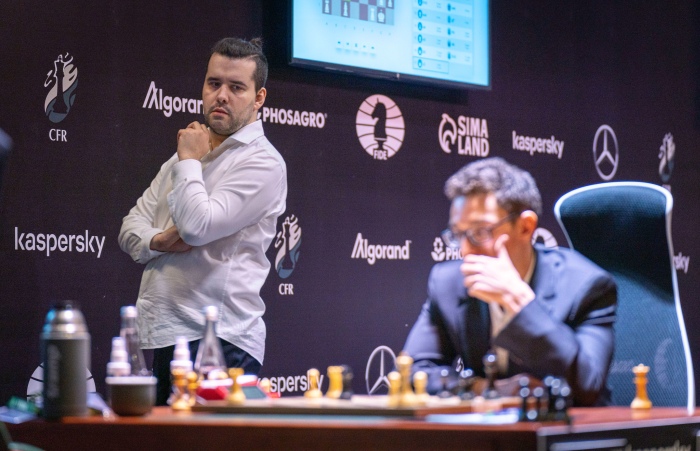
Ian Nepomniachtchi – Fabiano Caruana (½ : ½)
The leader of the competition, Ian Nepomniachtchi, playing with white against one of his closest pursuers, opted for the line 4.d4 in the Four Knights Opening known for its drawing tendencies. The tournament commentator Daniil Dubov predicted such a scenario: “Mathematically speaking, it’s a very simple decision for both. Ian has to play something drawish and that’s what he does. But I think also for Fabi it is not time yet to go into the kamikaze mood.”
Fabiano Caruana tried to complicate things, but objectively Black did not have many opportunities to do it. In a balanced, approximately equal position, the American Grandmaster rushed to exchange queens, which caused some problems for him. However, he managed to keep the balance with an accurate play, and immediately after passing the first time control a draw, the opponents split the point.

Fabiano Caruana:
“I thought Ian might have two approaches – one to get a complicated fight and another to play a more or less safe position with some minor chances that I mess this position up, but like 99% of the time this line will turn into a draw.”
“It’s still three rounds to go, I thought why I would burn my bridges,” said Fabiano Caruana, answering the question of whether he could go for something more double-edged in the opening.
Anish Giri – Ding Liren (1 : 0)
The grandmasters tested one of the lines of the exchange variation in the Ruy Lopez, where White trades his light-squared bishop for the c6-knight only after Black develops his other knight to f6. It is believed that with this sort of pawn structure the knight is not very well positioned on f6, but the subsequent game did uphold this theory. In a position with opposite-side castling (the white king went to the kingside, the black one to the queenside), Anish placed his knight on a5, trying to exert some pressure on the queenside.
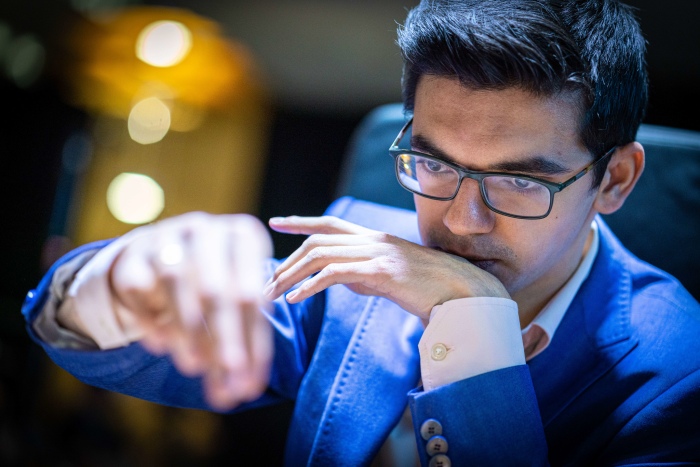
According to Giri, he did not expect the idea of Black with c7-c6 followed by the bishop transfer to c7, but most likely, it was a very strong plan. White’s attack temporarily came to a standstill as he had to retreat his advanced knight. The f7-f5 breakthrough was also unpleasant for White. But then Black got carried away with a pawn thrust (20…g4) but missed the moves 21.Ng5 and 22.h4.
After regaining the initiative, the Dutch grandmaster played with inspiration: he sacrificed his dark-squared bishop and pounced on the opponent’s king. Black’s barricades collapsed unexpectedly quickly and on move 29 Ding Liren threw in the towel.
Anish Giri: “A few people have already told me it was a great game but I don’t think it was that great as it looked in the end. At some point, he was the one who had all the play, he was dictating the course of the game.”
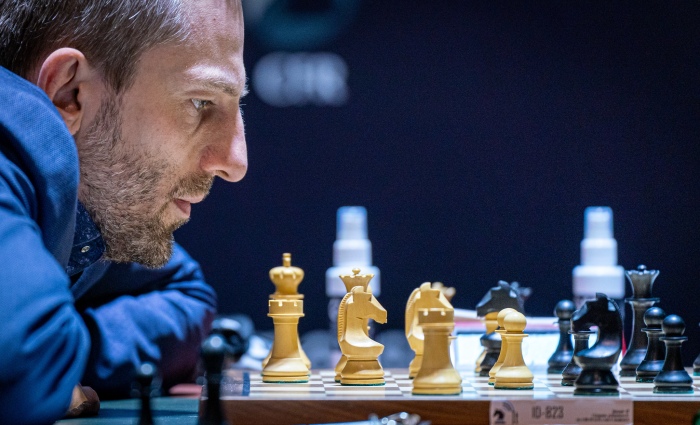
Alexander Grischuk – Maxime Vachier-Lagrave (1 : 0)
In response to Maxime’s pet Sicilian Defence, Alexander played an original system introduced by the world champion Magnus Carlsen. Already on the 4th move, the white queen jumped out to the center and then retreated to d2, blocking the way for its bishop. However, pretty soon White’s pieces achieved harmony: his dark-squared bishop moved to the big diagonal and the king hid on the queenside. Black, on the other hand, castled in the opposite direction which meant a sharp battle with all three possible outcomes.
On move 9, Grischuk introduced the new line and soon sacrificed a pawn to open the h-file. “9.Nge2 is a novelty. The computer is laughing, there are ten good ways but also he has twenty bad ways. So I thought I will give it a try,” Alexander Grischuk explained his preparation. “I spent the whole morning and yesterday trying to remember all the lines and still filed.”
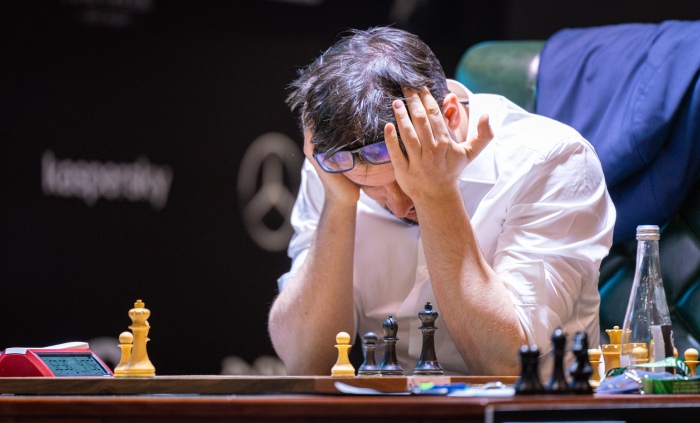
Black responded by putting pressure on the opposite side wing but did it belatedly. On move 19, the French grandmaster faced a difficult choice – where to move his attacked knight. He chose a seemingly reliable continuation which helped him to block the dangerous file but ended up in an inferior passive position with paralyzed dark-squared bishop. “
Later Grischuk sacrificed a whole rook to create mating threats to the opponent’s king, however, by his own admission, he overlooked two strong defensive ideas. In the mutual time scramble Vachier-Lagrave fought off all the direct threats and leveled the position, but immediately faltered. Right after passing the time control, Black had an unexpected chance to make a draw but Maxime immediately made a losing move.
According to Aleksander Grischuk, he didn’t go to smoke at move 40 as he usually does, to try and induce MVL to play fast 42…Rc2 and not play 42…Ba3! “It was my trick!” added Sasha at the press conference.
Maxime Vachier-Lagrave: “I just completely collapsed, missed everything and missed my last chance, 42…Ba3.”
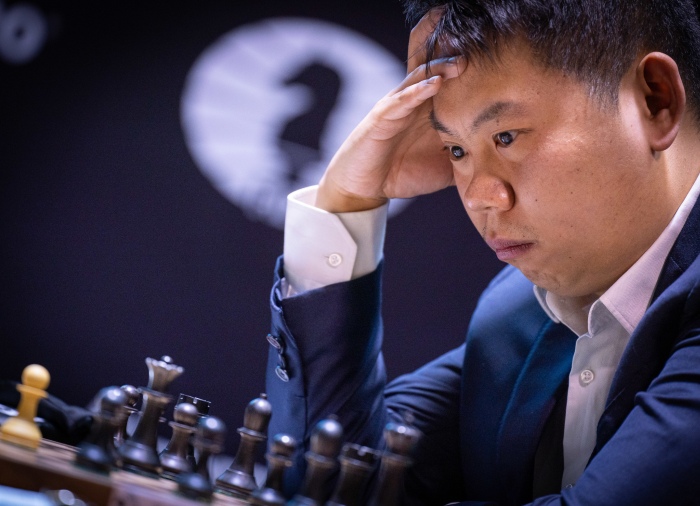
Kirill Alekseenko – Wang Hao (½ : ½)
In old-good Two Knights Defense, Alekseenko opted for a safe d2-d3 move, which usually leads to a solid positional play. Wang Hao was not happy with this scenario as he clearly wanted “more fun”. Already on the 6th move, he pushed the g7 pawn, weakening his kingside. Black got two bishops and active pieces but weakened the f5-square and allowed White to plant his knight on d5. On the other hand, White had a problem of his own – a weak d3-pawn that constantly needed protection.
Wang Hao outplayed his opponent in a dynamic fight, but then hurriedly snatched the d3-pawn (28…b5 seems much stronger). Alekseenko immediately took advantage of Black’s misstep, activated his queen, and created a counterplay that was sufficient for a draw.
Standings after Round 11:
1 | Ian Nepomniachtchi (2774) | 7 |
2 | Anish Giri (2763) | 6½ |
3 | Fabiano Caruana (2842) | 6 |
4 | Maxime Vachier-Lagrave (2767) | 5½ |
5 | Alexander Grischuk (2777) | 5½ |
6 | Hao Wang (2762) | 5 |
7 | Kirill Alekseenko (2698) | 4½ |
8 | Ding Liren (2805) | 4 |
Pairings for Round 12:
Caruana – Giri
Ding Liren – Grischuk
Vachier-Lagrave – Alekseenko
Wang Hao – Nepomniachtchi
Media accreditation for the FIDE Candidates Tournament in Yekaterinburg is carried out on the official website of the tournament: https://candidates-2020.com/accreditation and tel. +7 962 385-05-61. Contact: press@fide.com
Photo: Lennart Ootes
Partners supporting the FIDE Candidates Tournament:
Sima-land, as the General Partner
Algorand, as the Official Blockchain Partner
Kaspersky, as the Official Cybersecurity Partner
PhosAgro, General Partner of Chess Federation of Russia
Chessable, as Event Partner
Pine Creek Golf Resort, as event Partner
Mercedes-Benz Russia, the Official Auto Partner








